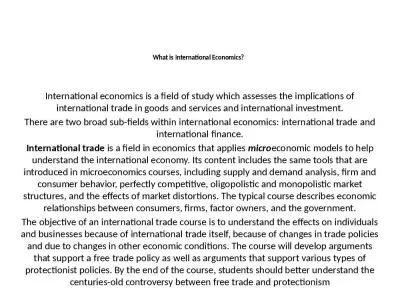PPT-International Economics Lecture
Author : emily | Published Date : 2023-06-22
11 Internal Economies of Scale Overview Introduction Monopolistic competition A review Internal Economies of Scale Setting up the model Adding in the trade Conclusions
Presentation Embed Code
Download Presentation
Download Presentation The PPT/PDF document "International Economics Lecture" is the property of its rightful owner. Permission is granted to download and print the materials on this website for personal, non-commercial use only, and to display it on your personal computer provided you do not modify the materials and that you retain all copyright notices contained in the materials. By downloading content from our website, you accept the terms of this agreement.
International Economics Lecture: Transcript
11 Internal Economies of Scale Overview Introduction Monopolistic competition A review Internal Economies of Scale Setting up the model Adding in the trade Conclusions Introduction A few lectures ago we talked about internal and external economies of scale. Within these two disciplines there are many more specific topics that economists study H owever in order to understand any economic topic in depth an economist must have a thorough understanding of both major economic disciplines For investors havi Rosemarie Nagel . Universitat Pompeu Fabra. , . ICREA, BGSE . April 2012 . Course content. (in red: replication of experiment). Week 1. Introduction . guessing game. Week 2. Bargaining/public goods . Anand S. Rao. September 23. rd. , 2008. For more information contact:. Anand S. Rao. Partner. Anand.Rao@diamondconsultants.com. Mobile: 617.633.8354. Agenda. What is Behavioral Economics (BE)?. What is the relevance of BE in Health/Wealth Decisions?. Objectives. To understand the concept ceteris paribus. To understand the difference between positive and normative statements. Homework: Explain the difference between positive and normative statements using examples from a current article of your choice.. Edina . Sinanovic. Health Economics Unit. University of Cape . Town. May 2011. Copyright: Dr Edina Sinanovic. Outline. The . scope of health economics. Health Economics Unit, UCT. research. teaching. Keynes-Hayek . Rap Videos. Keynes-Hayek rap . videos:. Russell . Roberts. , a Professor of Economics at George Mason University and filmmaker . John . Papola. developed two . exciting . rap videos that highlight the . Objectives. To understand the concept ceteris paribus. To understand the difference between positive and normative statements. Homework: Explain the difference between positive and normative statements using examples from a current article of your choice.. Laibson. & List, 2015). Definition. Introduction to Behavioral Economics. www.EconEdLink.org . 2. System 1 – “operates automatically and quickly, with little or no effort and no sense of voluntary control.”. 1. Lecture 2a . Multipliers & output models. . Regional and Local Economics (RALE) 2010 – Lecture 2a. 2. RALE - Lecture 2a. Last week: Introduction and profiling the local economy . This week: part a) Multipliers & output models . Sophomore Open House. March 31, 2023. Why Study Economics?. Intellectual reasons. . Economics is a unique combination of. Scientific method. Social concerns. Practical reasons. Good starting point for professional schools. . New program regulations information session. Time: . February 1. st. , 2018 . 17:00 . – . 17:45. Location: . Altes. . Amstgericht. (AA). Current Program . Overview. Area: Research Methods (12 Credit Points) . [Lecture 1]. Dr. Eleonora Fichera. Some admin stuff…. Course structure and contributors. Tutorials. Blackboard. Office hours. Textbooks and Evaluation. Course Structure and contributors. Two parts: . Professor Carol Newman. Head of Department of Economics. What prompted the start of this sustained increase in living standards?. Why did it happen in some countries at certain times and not at all in others?. International . economics is a field of study which assesses the implications of international trade in goods and services and international investment.. There are two broad sub-fields within international economics: international trade and...
Download Document
Here is the link to download the presentation.
"International Economics Lecture"The content belongs to its owner. You may download and print it for personal use, without modification, and keep all copyright notices. By downloading, you agree to these terms.
Related Documents

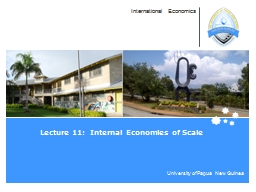


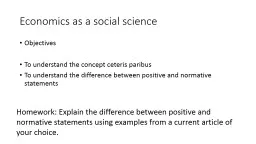




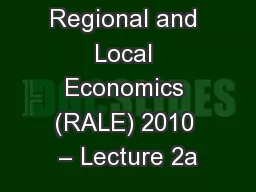
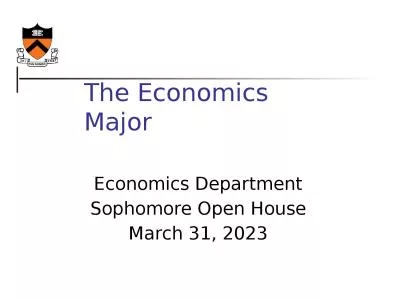

![ECON60441 Economics of Health [Lecture 1]](https://thumbs.docslides.com/1066017/econ60441-economics-of-health-lecture-1.jpg)

